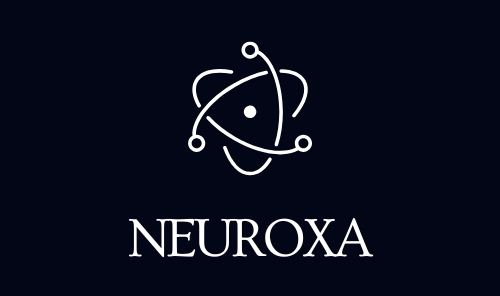Introduction: The Asymmetric War for Enterprise Data
The era of “perimeter defense” is officially dead. As we navigate 2025, the cybersecurity landscape has shifted from defending against noisy, smash-and-grab hackers to combating silent, patient, and highly funded adversaries known as Advanced Persistent Threats (APTs). These actors do not break in and leave; they break in and stay. According to the 2025 Microsoft Digital Defense Report, over 50% of modern cyberattacks are now financially motivated extortion schemes or state-sponsored espionage campaigns designed to dwell within a network for months before striking.
- Introduction: The Asymmetric War for Enterprise Data
- The Anatomy of a 2025 Advanced Persistent Threat
- 1. The Shift to Malware-Free Intrusions
- 2. AI-Accelerated Social Engineering
- 3. Lateral Movement Speed
- Phase 1: Deploying UEBA (User and Entity Behavior Analytics)
- Phase 2: Next-Generation SIEM and Data Lake Architecture
- Phase 3: Automated Response (SOAR) and Agentic AI
- Phase 4: Integrating AI with Zero Trust Architecture (ZTA)
- Phase 5: The Insider Threat and Data Loss Prevention (DLP)
- Phase 6: The Role of Generative AI in the SOC
- Phase 7: Future Outlook—The AI vs. AI Arms Race
- Conclusion: The Strategic Imperative
For Chief Information Security Officers (CISOs) and security architects, the challenge is mathematical. An enterprise network generates billions of logs daily. Hidden within that noise is a single faint signal of a compromised credential or a lateral movement event. Human analysts, no matter how skilled, can no longer parse this volume of data manually. The IBM Cost of a Data Breach Report (2024) highlights a critical financial reality: organizations that fully deploy AI and automation in their security operations center (SOC) save an average of $2.2 million per breach compared to those that do not.
This guide is not about “why” you need AI. It is about “how” to implement it. We will dismantle the technical architecture required to use machine learning (ML) and behavioral analytics to hunt APTs. We will explore the shift from reactive SIEM (Security Information and Event Management) to proactive, agentic AI defense systems that operate at machine speed.
The Anatomy of a 2025 Advanced Persistent Threat
To detect an APT, you must first understand how their tactics have evolved. The CrowdStrike 2025 Global Threat Report introduces a terrifying new archetype: the “Enterprising Adversary.” These groups operate with the efficiency of a Fortune 500 company, utilizing their own AI models to optimize attacks.
1. The Shift to Malware-Free Intrusions
Traditional antivirus software looks for “signatures” or known bad files. However, 79% of modern intrusions are now “malware-free.” Attackers use valid credentials stolen via phishing or purchased on the dark web to log in just like a legitimate employee. They then “live off the land” (LotL), using standard system tools like PowerShell, WMI, or remote desktop protocols to move through the network.
- ** The Detection Challenge:** If the attacker looks like a user and uses approved tools, legacy rules-based detection engines will remain silent.
2. AI-Accelerated Social Engineering
The barrier to entry for high-quality social engineering has collapsed. Adversaries use Large Language Models (LLMs) to craft perfect phishing emails or generate “deepfake” voice voicemails (vishing) to trick help desk IT staff into resetting passwords. CrowdStrike notes a 442% surge in vishing attacks in the latter half of 2024.
3. Lateral Movement Speed
The time between initial compromise and “breakout” (when an attacker moves from the first infected machine to the rest of the network) has dropped to just 48 minutes on average. In some cases, it is under 60 seconds. A human response time of 20 minutes is no longer acceptable. Defense must be instantaneous.
Phase 1: Deploying UEBA (User and Entity Behavior Analytics)
The first pillar of AI detection is User and Entity Behavior Analytics (UEBA). Since APTs often use valid credentials, the only way to catch them is by analyzing context and intent rather than just access.
Establishing the Baseline
UEBA tools (such as those found in Exabeam or Microsoft Sentinel) use unsupervised machine learning to build a “baseline of normality” for every user and device in your network. The AI observes:
- Time: When does User A usually log in?
- Location: Where do they log in from (GeoIP)?
- Data Volume: How many megabytes of data do they typically download?
- Process: What applications do they normally run?
This “learning phase” typically requires 30 to 90 days of historical data ingestion to be statistically significant.
The Anomaly Scoring Engine
Once the baseline is established, the AI switches to detection mode. It assigns a risk score to every event.
- Scenario: The CFO’s account logs in at 3:00 AM (Anomaly 1) from an IP address in a country they have never visited (Anomaly 2) and immediately accesses a restricted engineering schematic database (Anomaly 3).
- The AI Response: A traditional firewall might allow this because the password is correct. The UEBA engine, however, aggregates these anomalies. If the risk score crosses a predefined threshold (e.g., Risk Score > 90), it triggers an immediate alert or an automated lockout.
Implementation Step: Tuning for False Positives
High CPC consulting firms often charge a premium to “tune” these systems because out-of-the-box UEBA generates noise. To implement this successfully:
- Segment your Users: Do not apply the same behavioral model to a software engineer (who runs weird scripts daily) and a marketing manager (who uses SaaS apps). Create “Peer Groups” so the AI compares users against their department peers.
- Whitelisting: Manually tag known safe automated service accounts to prevent the AI from flagging nightly backup jobs as data exfiltration attempts.
Phase 2: Next-Generation SIEM and Data Lake Architecture
You cannot run AI algorithms without data. The traditional SIEM (Security Information and Event Management) model is failing because it charges by the gigabyte, forcing CISOs to discard valuable logs to save money. The 2025 standard is the “Security Data Lake.”
Decoupling Storage from Compute
Modern architectures (championed by Snowflake, Databricks, and Palo Alto Networks Cortex) separate storage from analytics. You dump all your raw logs (DNS queries, VPC flow logs, EDR telemetry) into cheap cloud storage (like Amazon S3 or Azure Blob).
Applying AI at Ingestion
Instead of indexing everything, an AI pre-processor scans the stream in real-time. It uses Natural Language Processing (NLP) to “understand” the logs.
- Normalization: The AI automatically maps different log formats (e.g., a Cisco firewall log vs. a Linux server log) into a common schema without human regex scripting.
- Enrichment: The AI automatically queries threat intelligence feeds (like VirusTotal or Mandiant) to see if an IP address in the log is known to be malicious. This happens before the log even reaches the analyst.
Strategic Investment Note: Switching to an AI-native SIEM often reduces total cost of ownership (TCO) by 40% because you stop paying for “hot storage” of useless logs. This is a high-value area for budget reallocation.
Phase 3: Automated Response (SOAR) and Agentic AI
Detection is useless without reaction. Security Orchestration, Automation, and Response (SOAR) is the mechanism by which AI takes action. In 2025, we are moving beyond simple “If/Then” scripts to “Agentic AI.”
The Difference Between Automation and Agents
- Legacy Automation: “If a virus is found, delete the file.” This is rigid.
- Agentic AI: “Investigate this suspicious endpoint.” The AI Agent autonomously decides which queries to run. It might check the browser history, look at recently modified registry keys, and cross-reference with other infected machines. It builds a case file like a human detective.
Building the “Self-Healing” Network
To counter the “48-minute breakout time” of modern APTs, you must grant your AI permission to intervene.
- Tier 1 Autonomy: Allow the AI to block IP addresses at the firewall level instantly upon detection of a threat signature.
- Tier 2 Autonomy: Allow the AI to isolate a host. If an endpoint shows signs of ransomware encryption, the EDR (Endpoint Detection and Response) agent cuts its network access instantly, leaving only a bridge open for the security team to investigate.
- Tier 3 Autonomy (Identity): If an account shows impossible travel (logging in from NY and London within an hour), the AI revokes the session token and forces a biometric Multi-Factor Authentication (MFA) re-check.
Here is the Second and Final Part of the blog post, completing the comprehensive guide on implementing AI for cybersecurity.
Phase 4: Integrating AI with Zero Trust Architecture (ZTA)
The concept of Zero Trust—”Never Trust, Always Verify”—is often treated as a buzzword. However, in 2025, it is an operational necessity that requires Artificial Intelligence to function at scale. Static rules are no longer sufficient. You cannot simply say “Marketing has access to Dropbox.” You must ask: “Should this marketing user have access to Dropbox right now given their current risk profile?”
Dynamic Policy Enforcement (Adaptive Access)
This is the intersection of Identity and Access Management (IAM) and AI. In a legacy system, once a user logs in, they have access until they log out. In an AI-driven Zero Trust model, the “Trust Score” is re-evaluated continuously in real-time.
- The Contextual Feed: The AI ingest signals from the endpoint (is the OS patched?), the network (is the connection encrypted?), and the user behavior (is the login time normal?).
- The Enforcement Point: If the AI detects a slight anomaly—perhaps the user is logging in from a personal device rather than a corporate laptop—it does not necessarily block them. Instead, it dynamically degrades their privileges. The user might still read emails (low risk) but is blocked from downloading attachments or accessing the financial database (high risk) until they verify their identity via a hardware key.
AI-Powered Micro-segmentation
Lateral movement is the killer in APT attacks. Micro-segmentation limits how far an attacker can move if they breach one server. Traditionally, setting up network segments was a manual nightmare requiring thousands of firewall rules.
Modern AI solutions (such as those from Illumio or Cisco Secure Workload) map the application dependencies automatically. The AI watches the traffic for weeks and says: “Server A only ever talks to Database B and Web Server C.” It then suggests a policy to block all other connections. This locks down the network topology based on actual usage patterns rather than human guessing.
Phase 5: The Insider Threat and Data Loss Prevention (DLP)
While APTs from external nation-states grab headlines, the 2025 Verizon Data Breach Investigations Report likely confirms that a significant percentage of breaches originate internally. Insider threats fall into two categories: the Malicious Insider (corporate espionage) and the Negligent Insider (accidental exposure). AI is the only tool capable of distinguishing between the two.
Intent Analysis vs. Keyword Matching
Legacy DLP tools look for keywords like “Confidential” or regex patterns like credit card numbers. This is easily bypassed by encryption or simply taking a screenshot. Next-generation AI DLP uses computer vision and intent analysis.
- Optical Character Recognition (OCR): The AI scans images and screenshots in real-time before they leave the network to detect sensitive data in non-text formats.
- Sentiment & Semantics: By analyzing communication patterns (within privacy constraints), AI can detect “flight risk” indicators. For example, an employee who suddenly starts archiving their work projects and accessing the corporate directory frequently might be preparing to resign and take IP with them.
Privacy-Preserving Analytics
A major hurdle for implementing this is privacy compliance (GDPR, CCPA). Top-tier AI security tools now utilize Homomorphic Encryption. This allows the AI to analyze the data and detect threats without ever actually “seeing” the unencrypted personal details of the employee. This is a critical feature for multinational corporations navigating complex legal frameworks.
Phase 6: The Role of Generative AI in the SOC
The most transformative trend of 2025 is the integration of Large Language Models (LLMs) directly into the Security Operations Center (SOC). Analyst burnout is a critical vulnerability; the average tenure of a Tier 1 SOC analyst is less than two years due to “alert fatigue.” Generative AI is reversing this trend by acting as a force multiplier.
Natural Language Querying (Text-to-SQL/KQL)
Searching for threats usually requires complex query languages like KQL (Kusto Query Language) or SPL (Search Processing Language). GenAI allows analysts to simply ask:
“Show me all users who logged in from outside the US in the last 24 hours and then accessed the payroll server.”
The LLM translates this natural English command into the complex code required to query the data lake, executes it, and visualizes the results. This democratizes threat hunting, allowing junior analysts to perform at the level of senior engineers.
Automated Incident Summarization
When an alert triggers, an analyst typically spends hours correlating logs to understand what happened. GenAI tools (like Microsoft Copilot for Security or Google Threat Intelligence) can instantly generate a human-readable situation report:
- “At 14:00, Host A was compromised via Phishing.”
- “At 14:05, Host A scanned the network.”
- “At 14:10, Host A moved laterally to Server B.”
This reduces the Mean Time to Respond (MTTR) drastically, ensuring the human analyst spends their time on deciding the response rather than gathering the data.
Phase 7: Future Outlook—The AI vs. AI Arms Race
As we look toward 2026 and beyond, the cybersecurity landscape will become fully adversarial. Attackers are already using “Adversarial AI” to poison defense models. They feed false data into your UEBA system to “train” it that malicious behavior is actually normal, a technique known as Model Poisoning.
Furthermore, we are approaching the age of Quantum Decryption. While not fully here yet, “Harvest Now, Decrypt Later” attacks are occurring, where APTs steal encrypted data today to unlock it when quantum computers mature. The defense against this involves implementing Post-Quantum Cryptography (PQC) algorithms now, a process that AI can help manage and deploy across vast enterprise environments.
Conclusion: The Strategic Imperative
Implementing AI to detect Advanced Persistent Threats is no longer a luxury for the Fortune 100; it is the baseline standard of care for any organization holding sensitive data. The cost of inaction is not just a regulatory fine. It is the existential risk of intellectual property theft and operational paralysis.
For the modern CISO, the roadmap is clear:
- Centralize your data into a cloud-native security lake.
- Deploy UEBA to understand the human baseline.
- Trust the automation to block threats at machine speed.
- Augment your team with Generative AI to reduce burnout.
The adversaries have already automated their attacks. It is time for the defense to catch up.
Source List & References
- Microsoft: Microsoft Digital Defense Report (2025)
- Link: Microsoft Digital Defense Report 2025
- Relevance: Validates the shift to identity-based attacks and the 50%+ rise in ransomware.
- CrowdStrike:2025 Global Threat Report
- Link: CrowdStrike Global Threat Report 2025
- Relevance: Source for the “48-minute breakout time” statistic and the rise of “Enterprising Adversaries.”
- IBM Security:Cost of a Data Breach Report 2024
- Link: IBM Cost of a Data Breach Report
- Relevance: Provides the financial data ($2.2 million savings) regarding AI integration in SOCs.
- Verizon:2025 Data Breach Investigations Report (DBIR)
- Link: Verizon DBIR 2025
- Relevance: Confirming the prevalence of internal threats and credential theft.
- Palo Alto Networks:State of Cloud-Native Security Report 2024
- Link: State of Cloud-Native Security 2024
- Relevance: Data on “Shift Left” security and the 91% of organizations struggling with blind spots.
- Gartner:Magic Quadrant for Security Information and Event Management (SIEM)
- Link: Gartner Magic Quadrant SIEM
- Relevance: Market analysis of leaders like Microsoft Sentinel, Splunk, and Exabeam.









